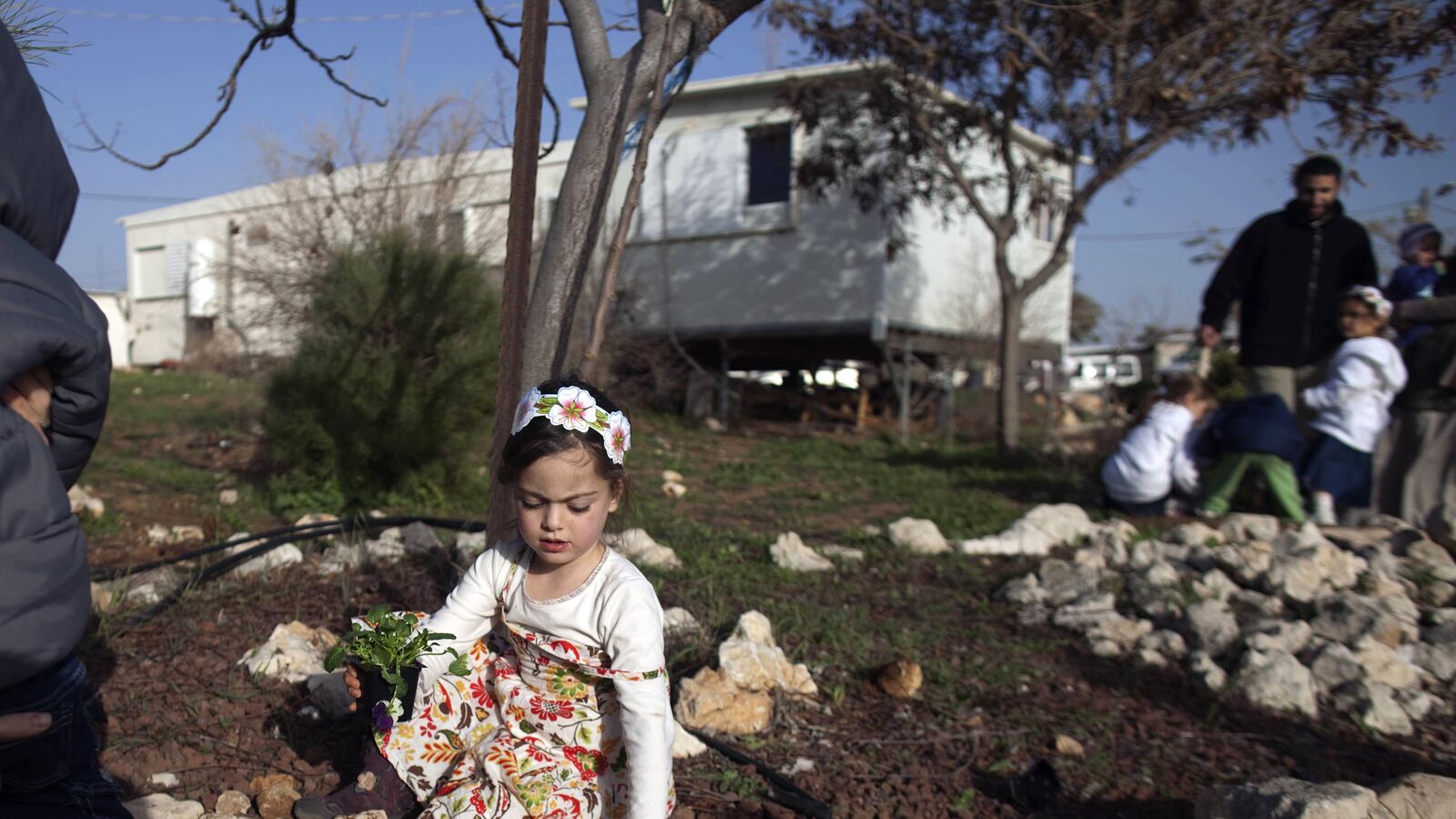The Israeli public recently got a peek at the enormity of the actual, literal price tag attached to the settlement enterprise.
Migron is an “outpost”—a settlement that’s illegal even by Israeli standards—and was built on land that even the Israeli government recognizes as Palestinian-owned. The 48 families and single woman living at Migron have been ordered to leave by Israel’s High Court, and they’ve said that they will—if the government first provides them with temporary homes.

On Sunday the Netanyahu cabinet agreed (unanimously) to do so, to the tune of 53 million shekels—over $14 million, and that’s not including any other costs the government will incur when the families are moved to permanent homes in other settlements (settlements which are legal in Israeli eyes, if not according to the Fourth Geneva Convention).Or, in other words: A group of criminals told their government to foot the bill for ending their criminal activity, with tax-payer money. And the government agreed, for the low, low price of about $300,000 per family.
And yet, as outrageous as that story is, as enraged as Israel’s law-abiding citizens should be about Migron—it is but the tip of the proverbial iceberg.
A report released a year ago revealed that Israel’s settlements had, at that time, already cost Israelis $18.8 billion.
About six weeks after that report came out, a wave of fury swept Israel in the form of social justice protests that appeared to appear out of nowhere. Those who were paying attention knew something was afoot – from a massive consumer boycott to grumbled conversations at home and in the press—but I think it’s fair to say that for most, the speed with which a few tents became a national movement was breathtaking.
The demonstrations started out as housing protests, but soon became about so much more: They were about people wanting to find a job, build a family, and have reasonable hope that things can get better, for themselves and for the country. They were about people being told their entire lives that they live in the only country that’s Good For The Jews, and discovering that the government of Good-For-The-Jews treats them with contempt. They were about the 2010 Carmel wild fires that revealed a shocking state of unreadiness and about ugly Parliamentary fights over how best to shrink democracy. They were about doctors willing to go on hunger strike, sky-rocketing cottage cheese prices, and the Arab Spring.
Here’s what they weren’t about: The settlements. The occupation. The conflict.
To be sure, many of last summer’s protesters came from Israel’s traditional left, and there were many instances of cooperation between Israel’s Jewish, Bedouin, and Palestinian citizens.
But for reasons mired in the miasma of Israeli politics, it was judged very important that the protests not be seen as “political” but only “social” – and thus, while the extraordinarily political questions of how a society is funded were embraced, the extraordinary social costs incurred in four and a half decades of military occupation and settlement were not.
I write a lot about Israel/Palestine. I try very hard to bring greater attention to the suffering of the Palestinians under occupation, their legitimate aspirations to self-determination, and the idea that Israel’s own future is in danger if it doesn’t finally grapple with the moral imperative to negotiate with its enemies – but you know what? Forget all that.
Forget human rights. Forget democracy. Forget morality and ethics and legal considerations. The settlements, and the military occupation they require, are costing Israel an arm and a leg.
You cannot annually spend $662 million on the civilian costs of settlements, plus another $662 million for the military costs, throw in another $800 million for extending the security wall – and expect to have enough for hospitals. You cannot spend all that money on 6.5% of your population, and be surprised that your country has the second highest poverty rate in the OECD (second only to Mexico).
Israel’s social justice protests started, and remain firmly attached to, the country’s housing woes—but a government that has, ever since 1994, built half the houses in the settlements but only a fifth of those within the Green Line is signaling very clearly where its priorities lie. And it’s not within the Green Line.
The occupation is, was, and will for some time remain, Israel’s greatest unresolved dysfunction—and the Migron story merely serves to prove the point.
And like a substance abuser, Israel’s government is doing everything it can to protect its addiction to the territories. Sure, the government might try to make other things right – hold talks with the doctors, lower prices here only to raise them there—but unless and until it addresses the dysfunction of the conflict, everything else will be entirely captive to the occupation.
At a certain point, as the Migron settlers know, it comes down to simple math.






